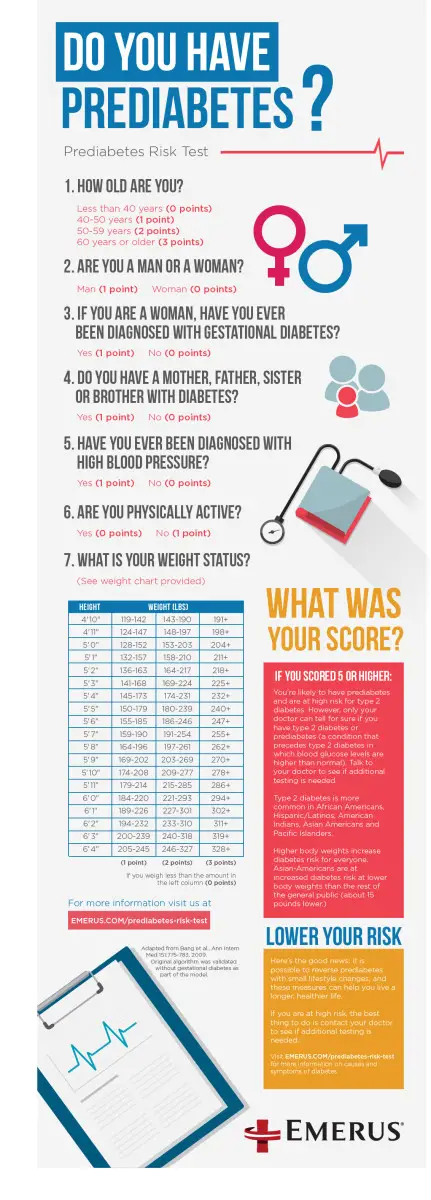Last Updated on 1 year by Francis
If you’re worried about developing diabetes, it’s important to know the signs and symptoms of pre-diabetes. Pre-diabetes is a condition which can lead to full-blown diabetes if not addressed early. In this article, we’ll explore how to tell if you’re pre-diabetic and discuss strategies for managing the condition. With the right precautions and lifestyle changes, you can reduce your risk of developing diabetes and maintain a healthy lifestyle.
How To Tell if You’re Pre Diabetic?
If you’re concerned about developing diabetes, there are a few key signs that can indicate that you’re pre-diabetic. These include:
- Unexplained weight loss
- Increased thirst and urination
- Fatigue
- Frequent infections
- Blurred vision
If you have any of these signs, you may be pre-diabetic. You should visit your doctor for a full assessment, including blood tests. Treatment for pre-diabetes may involve lifestyle changes or medication.

Contents
What is Pre-Diabetes?
Pre-diabetes is a condition where blood sugar levels are higher than normal but not high enough to be classified as diabetes. It is usually caused by either a diet that is high in sugar and carbohydrates, being overweight, or a lack of exercise. It can lead to serious health complications including heart disease and stroke if left untreated.
People who are pre-diabetic have an increased risk of developing type 2 diabetes. It is important to get tested for pre-diabetes to help prevent the onset of type 2 diabetes. Knowing the signs and symptoms of pre-diabetes can help you identify the condition early and get the treatment you need.
What are the Symptoms of Pre-Diabetes?
The most common symptom of pre-diabetes is elevated blood sugar levels. This can be detected through a simple blood test. Other symptoms of pre-diabetes include increased hunger, thirst, and fatigue.
Other symptoms include frequent urination, blurry vision, and numbness or tingling in the hands and feet. If you experience any of these symptoms, it is important to get tested for pre-diabetes.
Elevated Blood Sugar
Elevated blood sugar levels are the most common symptom of pre-diabetes. This can be detected through a simple blood test. If your blood sugar levels are higher than normal, it could be a sign of pre-diabetes.
Increased Hunger and Thirst
If you find yourself constantly feeling hungry and thirsty, it could be a sign of pre-diabetes. Frequent hunger and thirst can be caused by the body’s inability to process sugar properly. This can lead to dehydration and an increased appetite.
What Should You Do if You Think You Are Pre-Diabetic?
If you think you may be pre-diabetic, it is important to get tested. Your doctor can give you a simple blood test to check your glucose levels. If the results of the test indicate that you are pre-diabetic, your doctor will be able to give you advice on how to manage your condition.
Talk to Your Doctor
The first step to managing pre-diabetes is to talk to your doctor. Your doctor can tell you what lifestyle changes you can make to help manage your condition. This may include eating a healthier diet, exercising more, and losing weight.
Make Healthy Lifestyle Changes
Making healthy lifestyle changes is essential for managing pre-diabetes. Making small changes such as eating a healthy diet, exercising regularly, and losing weight can help improve your blood sugar levels and reduce your risk of developing type 2 diabetes.
Few Frequently Asked Questions
What is Pre-Diabetes?
Pre-diabetes is a metabolic condition in which higher-than-normal blood sugar levels exist, but are not high enough to be classified as Type 2 Diabetes. Pre-diabetes increases the risk of developing Type 2 Diabetes, as well as other serious health problems such as cardiovascular disease.
What Are the Symptoms of Pre-Diabetes?
Generally, pre-diabetes does not cause any noticeable symptoms. Some people may experience increased thirst, fatigue, and blurred vision, but these symptoms are typically mild.
What Are the Risk Factors for Pre-Diabetes?
The most common risk factors for pre-diabetes are being overweight or obese, having a sedentary lifestyle, being of a certain age or ethnicity (African Americans, Hispanics, and Native Americans), having a family history of diabetes, and having a history of gestational diabetes.
How Can I Tell if I’m Pre-Diabetic?
The best way to tell if you are pre-diabetic is to get your blood sugar levels tested. Your doctor may order a fasting blood sugar test or an A1c test to check for pre-diabetes. A fasting blood sugar test measures your blood sugar levels after not eating for 8 hours, while an A1c test measures your average blood sugar levels over the last 2-3 months.
What Are the Treatment Options for Pre-Diabetes?
Treatment for pre-diabetes focuses on lifestyle changes such as eating a healthy diet, exercising regularly, and maintaining a healthy weight. Your doctor may also prescribe medication to help manage your blood sugar levels.
What Are the Complications of Pre-Diabetes?
The primary complication of pre-diabetes is the increased risk of developing Type 2 Diabetes. Additionally, having pre-diabetes increases the risk of developing heart disease, stroke, and other health problems. It is important to make lifestyle changes to reduce your risk of developing these complications.
6 things to know about prediabetes
If you think you may be pre-diabetic, it’s important to get tested. The earlier you catch it, the easier it is to manage and prevent it from developing into full-blown diabetes. With proper lifestyle changes, and your doctor’s guidance, you can take steps to stay healthy and prevent diabetes from taking hold. So don’t wait – take the steps to protect your health and get tested today.








